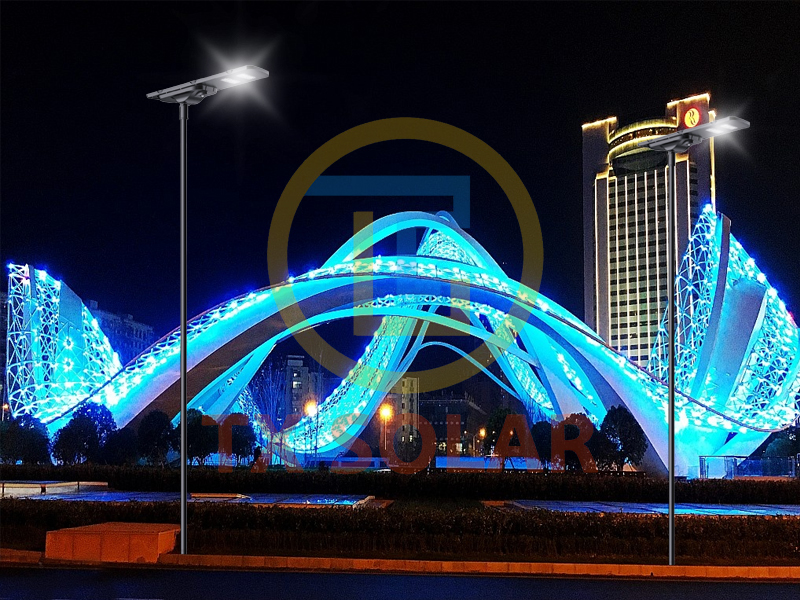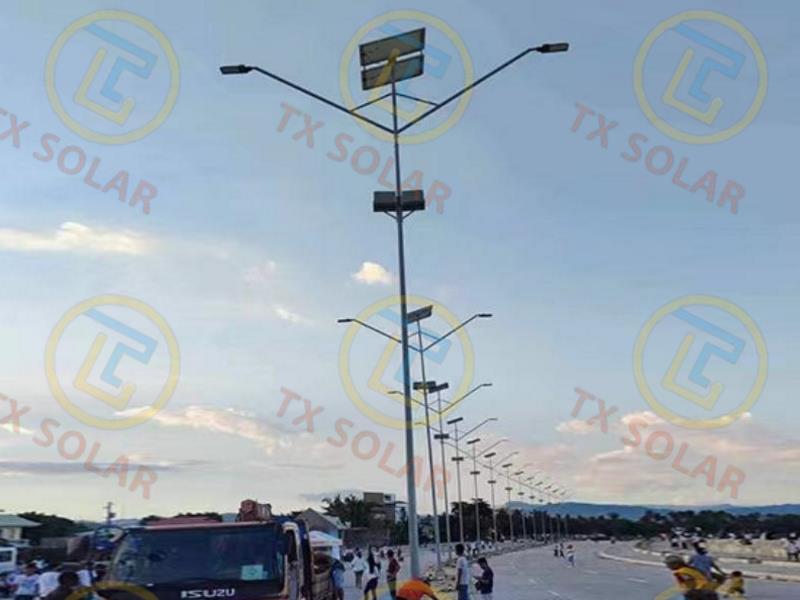When it comes to choosing the right solar street lights for your outdoor lighting needs, the decision often comes down to two main options: all in one solar street lights and split solar street lights. Both options have their own pros, and it’s important to weigh these factors carefully before making a decision. In this article, we will explore the differences between all in one and split solar street lights and discuss which option is better suited for your specific requirements.
As the name suggests, an all in one solar street light is a self-contained unit that integrates all the necessary components into one unit. This includes solar panels, LED lights, batteries and controllers, all housed in one fixture. Split solar street lights, on the other hand, separate these components into separate units, with the solar panels usually installed separately from the light fixtures and batteries.
One of the main advantages of all in one solar street lights is their compact, streamlined design. Since all components are integrated into a single unit, these lights are generally easier to install and require minimal maintenance. Additionally, the one-piece design makes these lights more resistant to theft and vandalism because components cannot be easily accessed or removed.
Split solar street lights, on the other hand, offer greater flexibility in placement and positioning. By installing solar panels and lamps separately, split solar street lights can be placed where the solar panels receive the most sunlight, while the lamps can be placed in the optimal lighting position. This flexibility is especially beneficial in areas where sunlight is limited or where shading may be a consideration.
Maintenance and repair
In terms of maintenance and repair, split solar street lights may have more advantages than all in one solar street lights. With the components separated, it is easier to troubleshoot and replace individual parts if necessary. This may reduce the maintenance costs of split solar street lights and extend their overall service life.
Overall performance and efficiency
In terms of overall performance and efficiency, both types of solar street lights have their own advantages. all in one solar street lights are praised for their high energy efficiency and reliable performance, thanks to their integrated design that minimizes energy loss. On the other hand, split solar street lights may provide better overall performance in certain scenarios, especially in areas with changing sunlight conditions or where specific lighting requirements need to be met.
Cost
In terms of cost, the initial investment of all in one solar street lights may be higher than that of separate solar street lights due to their integrated design and higher manufacturing costs. However, it is important to consider the long-term savings and benefits, such as lower maintenance costs and greater energy efficiency, which may make the initial investment worthwhile.
Ultimately, the choice between all in one and split solar street lights will depend on your specific lighting needs, budget, and installation requirements. If you prioritize ease of installation, minimal maintenance, and compact design, all in one solar street lights may be a better choice for you. On the other hand, if you require greater positioning flexibility, potential cost savings, and easier maintenance, split solar street lights may be a more suitable option.
To sum up, both all in one solar street lights and split solar street lights have their own advantages and precautions. It’s important to carefully evaluate your specific requirements and weigh the pros and cons of each option before making a decision. Whether you choose all in one or split solar street lights, investing in solar outdoor lighting can provide long-term benefits in terms of energy savings, environmental impact, and overall efficiency.
If you need solar street lights, please feel free to contact us for a quote.
Post time: Aug-29-2024


